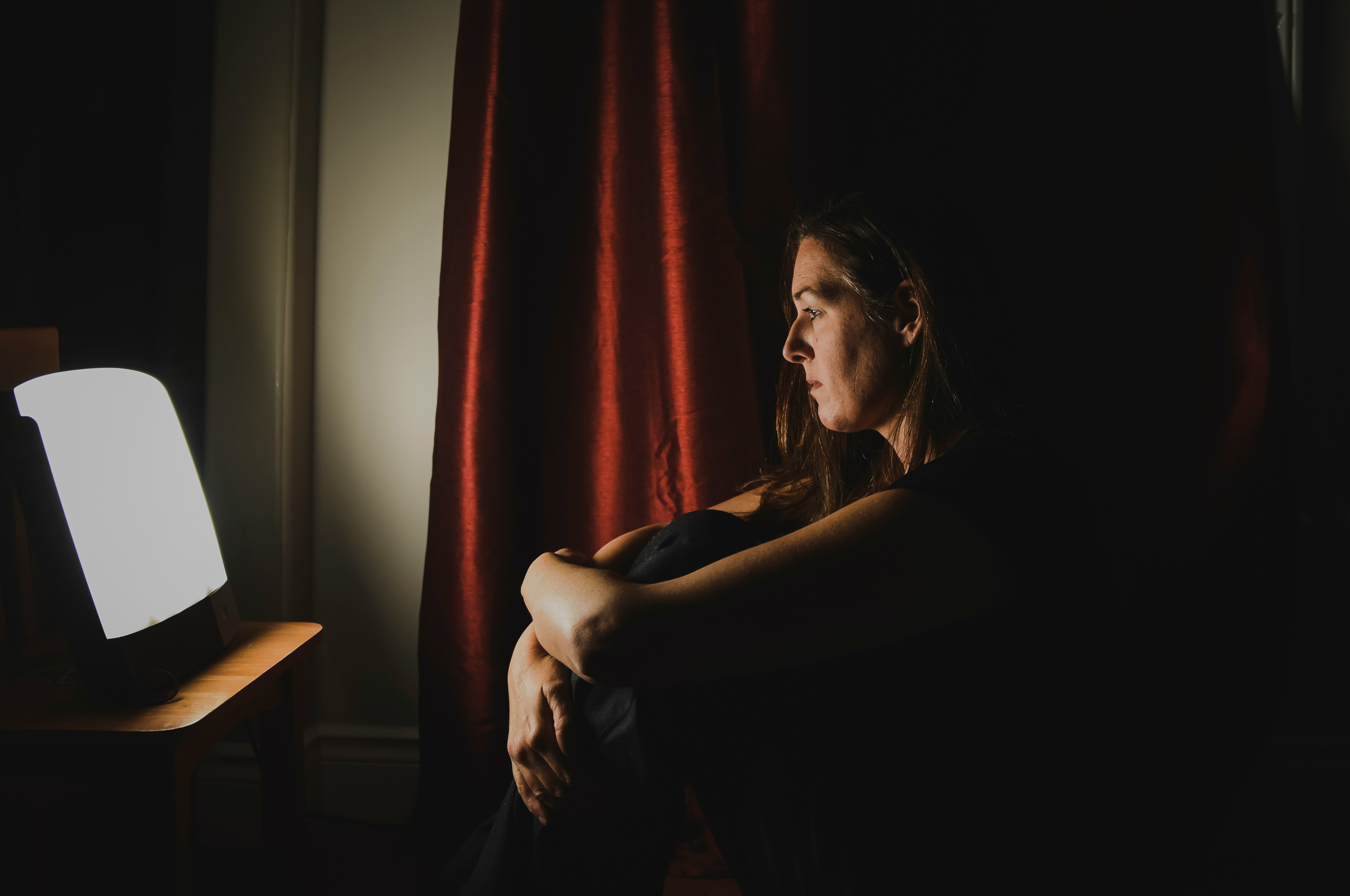
Have you ever noted that you sleep more in the winter months? Or eat more carbs or have low energy? If you do, then you might be one of the around 6 percent of the higher latitude populations with seasonal affective disorder (SAD).
If you’ve searched the internet for tips on how to fight the winter blues, you’ve probably been advised to buy a therapy lamp. So, you may be wondering what research says about whether they are effective and how they work.
Before we examine the evidence for light therapy, it’s important to understand why mood might be affected by sunlight. Vitamin D is produced when your skin is exposed to sunlight, and some scientists believe there is a link between depression and low vitamin D levels.
Studies have found that about 10 percent of the population of the far north, for example, Alaska and Finland, experience SAD. Interestingly, Icelanders, who also live in these very northern latitudes, do not appear to suffer so much from SAD. This might be because of their fish-packed diet, which is rich in vitamin D.
Light also stimulates your visual system, regulating activity in the so-called circadian pacemaker. This is the suprachiasmatic nucleus (SCN), a small region of the brain. The SCN gets direct input from the retina and is also packed with melatonin receptors. Melatonin supplements are now being touted as a treatment for depression. So, there are multiple reasons why light might be important for mood.
SAD was first described around 1980 in the US when a man who experienced the symptoms outlined above invented a light box to treat himself.
There have been many studies examining light therapy in SAD with mixed and contradicting results. However, data from all these studies can be combined and examined using meta-analyses to give a more accurate overall picture. A meta-analysis merges the findings of several independent studies. There have been several meta-analyses of this topic, and most show that light therapy has a positive effect, not only on SAD but also on major depression.
Does light intensity matter
Light intensity is measured in lux. A 1999 meta-analysis of 39 scientific papers found that strong light intensity (6,000-10,000 lux) had a greater effect than medium light intensity (1,700-3,500 lux). Medium-light intensity had a greater effect than dim lighting (less than 600 lux) on depressive symptoms in people with SAD. A 2019 meta-analysis of 19 studies also found that brighter light (greater than 1,000 lux) is needed to treat SAD.
You might be wondering whether light color matters.
A 1997 meta-analysis looked at 40 scientific papers examining different colors of light. It revealed that light of short to medium wavelengths (blue, green, and yellow) was effective but that red or UV wavelengths did not seem to treat SAD. This study also reviewed the timing of the phototherapy. The data, although not significant (which means more studies are needed), suggested that phototherapy in both the morning and the evening was more effective than the morning or evening alone.
Does phototherapy work in non-seasonal depression?
A 2005 meta-analysis of 23 studies found phototherapy worked for people with SAD and for people with non-seasonal depression. This paper reviewed six studies of combined treatment for non-seasonal depression. It found that phototherapy, although effective alone, did not produce a greater effect on depression symptoms when given together with antidepressant medication.
However, more recent studies agree that the combination treatment is more effective. A 2016 meta-analysis of ten studies did find phototherapy augmented drug treatment of depression. A 2019 meta-analysis of seven studies also found it increased the power of antidepressants.
So, if you suffer from non-seasonal depression, then phototherapy may work as a first-line treatment and will probably boost the effects of any antidepressant drug that you may be taking.
There is also a condition called sub-syndromal SAD (SSAD or sub-SAD) affecting about 10-15 percent of higher latitude populations, where symptoms are milder or less frequent than SAD. Sub-SAD can also be treated with light therapy.
Vitamin D is essential for physical health as well as mental health as it regulates calcium and phosphate levels and is critical for good bone density and muscle and teeth health. It’s also essential for a healthy immune system.
There are other studies that look at lighting in the workplace and its effect on employees; for example, certain types of light might improve alertness, while other lighting might increase headaches.
If you suffer from SAD, choose a higher intensity light for a faster effect, and use the light for longer, for example, both morning and evening sessions. Avoid UV light, which is ineffective for SAD and can lead to sunburn or skin cancer. And don’t forget to eat some fish to boost your vitamin D levels, too.
This article was originally published on The Conversation by Colin Davidson at the University of Central Lancashire and Claire Hutchinson at the University of the West of Scotland. Read the original article here.







